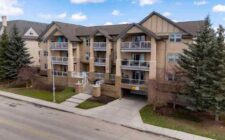Multi-family properties, such as duplexes, triplexes, and apartment buildings, have become increasingly popular investment options for real estate investors seeking to diversify their portfolios and generate passive income. These types of properties offer several potential advantages, including economies of scale, steady cash flow, and favorable financing options. However, there are also potential drawbacks to consider, such as increased management responsibilities, higher initial costs, and greater susceptibility to market fluctuations. In this article, we will explore the pros and cons of investing in multi-family properties to help you make an informed decision about this unique investment opportunity.
Pros of Investing in Multi-Family Properties
1. Economies of Scale
One of the most significant advantages of investing in multi-family properties is the economies of scale they offer. When you own a property with multiple units, certain fixed costs, such as property taxes, insurance, and maintenance, can be spread across multiple rental incomes. This can result in lower per-unit costs compared to single-family properties, increasing your overall return on investment (ROI).
2. Steady Cash Flow
Multi-family properties often provide a steady stream of rental income, as vacancies in one unit are unlikely to impact the overall cash flow significantly. This reliable cash flow can help cover mortgage payments, property expenses, and potentially provide additional passive income for investors. In contrast, single-family properties are more vulnerable to fluctuations in rental income, as a single vacancy can result in a complete loss of cash flow for the property.
3. Favorable Financing Options
Lenders often view multi-family properties as lower-risk investments compared to single-family properties, due to their consistent cash flow and ability to weather economic downturns. As a result, financing options for multi-family properties can be more favorable, with lower interest rates, higher loan-to-value ratios, and longer loan terms available to investors.
4. Easier Property Management
Managing multiple units within a single property can be more efficient and cost-effective than managing several single-family properties spread across different locations. This can result in lower property management fees and simplified logistics, as all units are located in one place.
5. Higher Appreciation Potential
Multi-family properties often have a higher appreciation potential than single-family properties, as improvements and upgrades to common areas, amenities, and individual units can increase the overall value of the property. Additionally, investors can often negotiate a better purchase price for a multiplex for sale, particularly when dealing with motivated sellers or distressed properties.
Cons of Investing in Multi-Family Properties
1. Higher Initial Costs
Investing in multi-family properties typically requires a larger initial investment compared to single-family properties, due to the higher purchase prices and down payment requirements. This can present a barrier to entry for some investors, particularly those with limited capital or who are just starting in real estate investing.
2. Increased Management Responsibilities
Owning and managing multi-family properties come with increased management responsibilities, such as tenant screening, rent collection, maintenance, and dispute resolution. While property management companies can be hired to handle these tasks, this can add to the overall cost of owning the property and reduce your ROI.
3. Greater Susceptibility to Market Fluctuations
Multi-family properties can be more susceptible to market fluctuations than single-family properties, particularly during economic downturns. High vacancy rates, rent reductions, and increased competition for tenants can impact the overall performance of the property, potentially leading to lower cash flow and reduced property values.
4. Higher Tenant Turnover
Multi-family properties often experience higher tenant turnover rates compared to single-family properties, as tenants in multi-family units are more likely to view their living arrangements as temporary. This can result in increased vacancy rates, higher marketing costs, and more frequent unit turnover expenses, such as painting and repairs.
In conclusion, investing in multi-family properties presents both attractive opportunities and potential challenges for real estate investors. The economies of scale, steady cash flow, favorable financing options, easier property management, and higher appreciation potential make multi-family properties an appealing investment choice. However, it is crucial to carefully consider the potential drawbacks, such as higher initial costs, increased management responsibilities, greater susceptibility to market fluctuations, and higher tenant turnover.
Ultimately, the decision to invest in multi-family properties will depend on your individual investment goals, risk tolerance, and financial situation, which means making sure you can afford to purchase the property. Before making a decision, conduct thorough research, analyze local market conditions, and consult with experienced real estate professionals to ensure you are well-informed and prepared for the responsibilities associated with owning and managing multi-family properties. By carefully weighing the pros and cons and aligning your investment strategy with your long-term objectives, you can make an informed decision on whether investing in multi-family properties is the right choice for your real estate portfolio.
FRENCH TAGS




